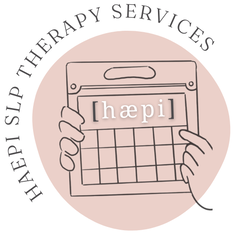|
Motor planning is the "muscle memory" that we all have when doing tasks, such as typing, driving, or even knowing where to reach your phone in the middle of the night.
For children who use AAC programs (such as LAMP Words for Life that you see pictured here), it is so important (I can't stress this enough!) to keep that motor plan consistent from the start. This means not limiting the screen to only a few buttons in the grid. The child's vocabulary will inevitably grow, and it is going to be so frustrating for them to have to relearn the motor plan for each word again and again. Usually, we recommend starting with the max number of words available (or at the very least, the maximum grid size) and hide buttons that aren't needed right away. You'll also notice that I try not to complete a partial motor plan. I may guide with a point or help him figure out where to go, but if I immediately opened to the "vegetables" page for him, he would not learn the plan to get there. Similarly, when I model words, I try to model the entire plan for him. A lot of my clients use LAMP Words for Life due the motor planning aspect, and that's why I am proficient at using it upside down (since I have now learned that plan too!). We add gestalts on an individual basis, but I do see the huge advantage of this system for educating teachers, paras, support staff, etc. as the system is standardized while still allowing for customization! by Halle Demchuk, SLPPaediatric SLP | GLP-Trained Clinician | Owner of HAEPI SLP |
The HAEPI BlogCheck here for HAEPI updates, helpful SLP information, free resources, articles, and more!
Archives
June 2024
Categories
All
|
Empowering Happy Communicators |
get in touch |
Quick Links |
© HAEPI SLP THERAPY SERVICES.
HAEPI SLP Therapy Services is proudly neurodiverse, Indigenous-owned, and woman-operated.
We acknowledge that the City of Thunder Bay has been built on the traditional territory of Fort William First Nation, signatory to the Robinson Superior Treaty of 1850. We also recognize the contributions made to our community by the Métis people. We strive as guests on these lands to honour our responsibilities to care for this land and uphold the Treaties that were signed therein.



